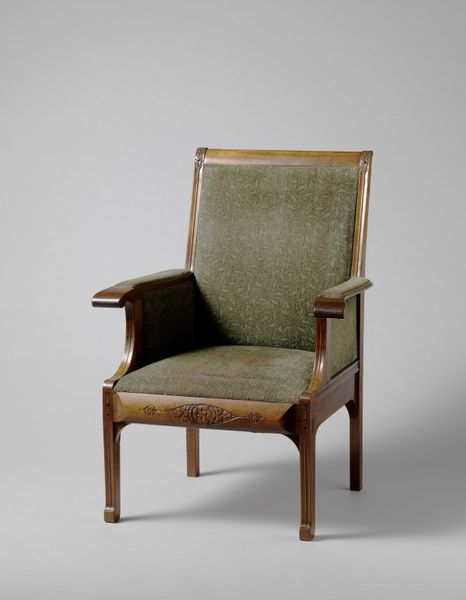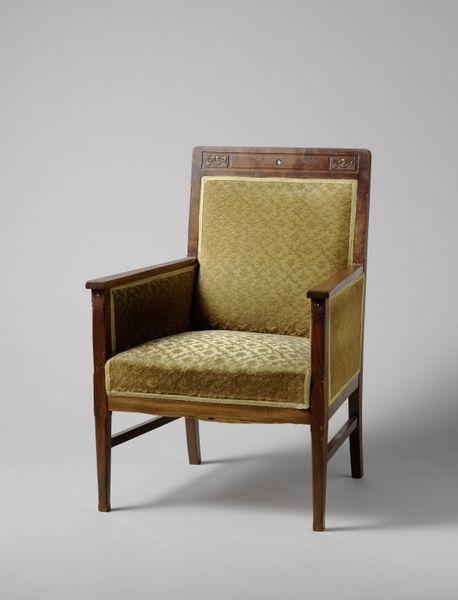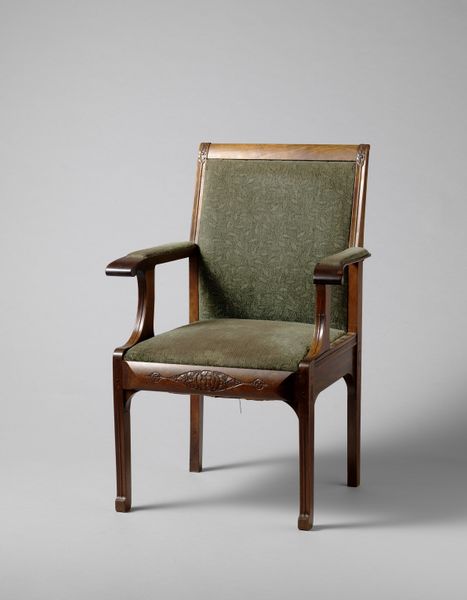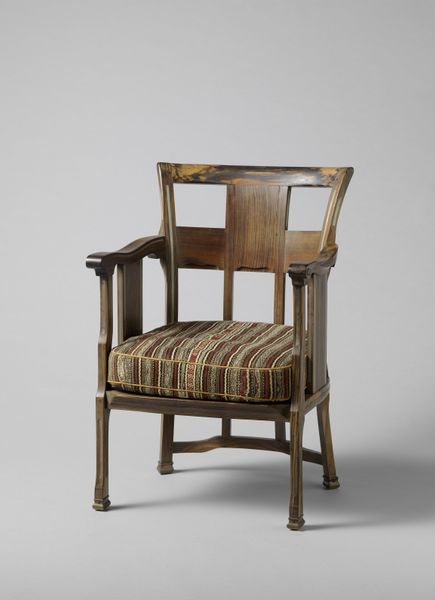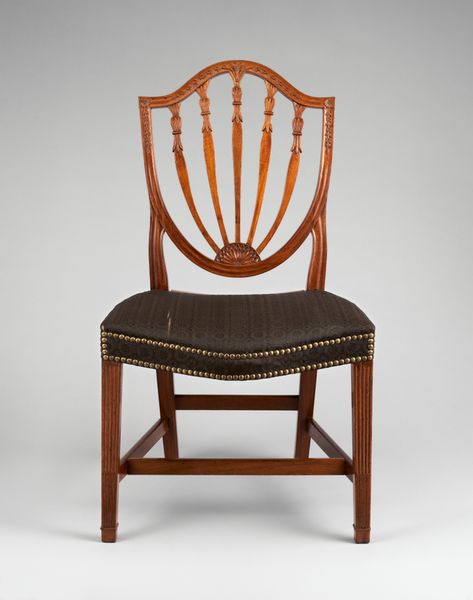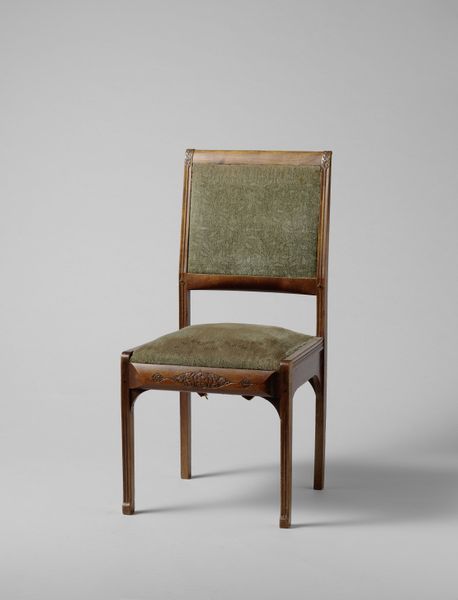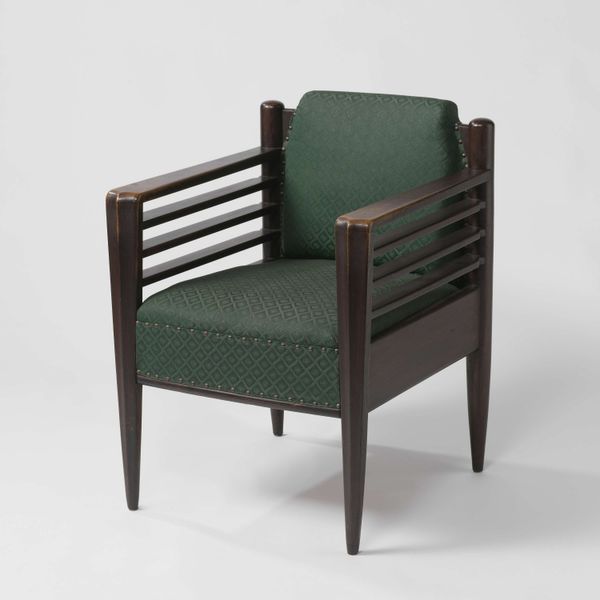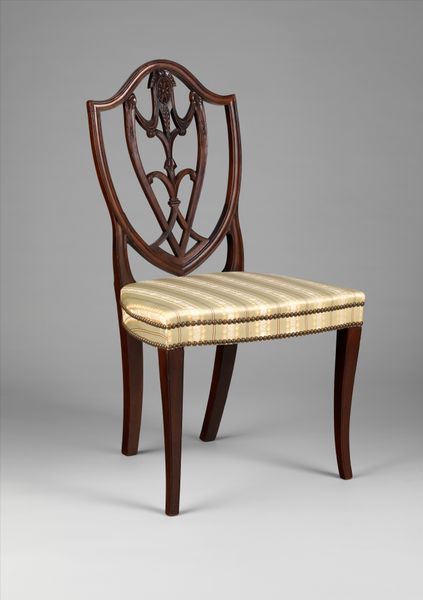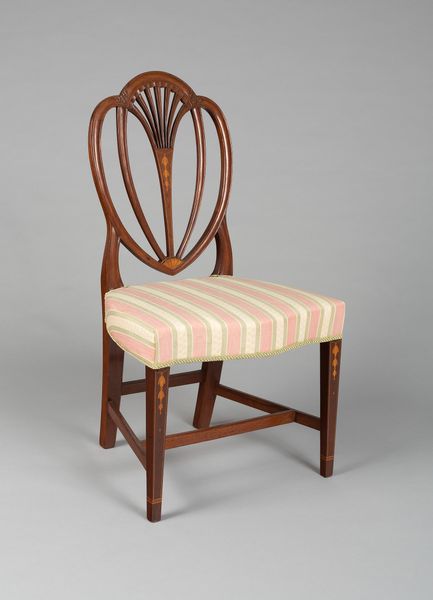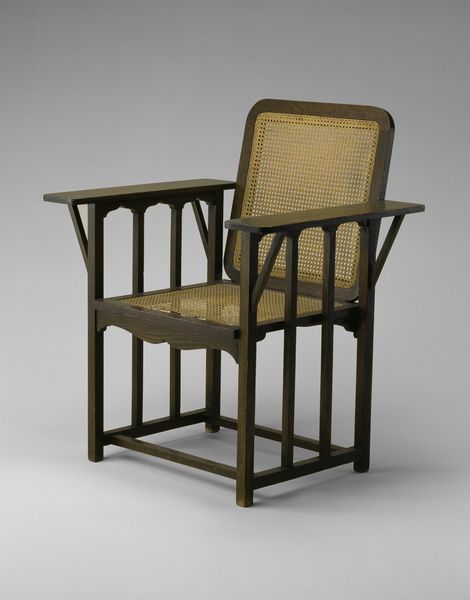
textile, wood
#
still-life-photography
#
arts-&-crafts-movement
#
furniture
#
textile
#
wood
#
decorative-art
Dimensions: height 92 cm, width 48 cm, depth 52 cm, weight 15.2 kg
Copyright: Rijks Museum: Open Domain
Editor: This is "Stoel," or "Chair" in English, designed by Carel Adolph Lion Cachet, sometime between 1915 and 1925. It's currently at the Rijksmuseum and seems to be made of wood and textile. There's a simple, almost austere quality to it. What statements might such ordinary objects convey, intentionally or unintentionally? Curator: Indeed, a deceptively simple object. This chair, created within the Arts and Crafts movement, invites us to consider the political dimensions of the decorative arts. Think about who had access to such carefully crafted, individual pieces during that time. Was this chair intended for the domestic sphere, reinforcing traditional gender roles? Editor: That's interesting. I was mainly focused on the style, but didn’t really consider who it was *for.* Curator: Exactly! Consider the labor involved, the materials used. How does this chair embody the ideals of the Arts and Crafts movement—the return to handcrafted quality, a rejection of industrialization? And more importantly, whose labor was valued, and whose was exploited, in the creation of such pieces? Does it offer a critique of mass production or simply present an alternative for the wealthy elite? Editor: So, the chair becomes less about design and more about the social statement? Curator: Not *more* about, but also about. It's about understanding the chair as a material object embedded within a specific historical and social context, reflecting power dynamics and class structures. How can we deconstruct the narrative of simple beauty to reveal the underlying political and economic realities? Editor: I see. It adds another layer of interpretation, thinking about not just the “what” but the “who” and “why” behind the art. Curator: Precisely. By examining everyday objects through an intersectional lens, we gain insights into broader cultural narratives and challenge dominant historical accounts. Editor: Thank you; that really changes my perspective on how to approach art! Curator: My pleasure. Hopefully, it’s another tool for thinking about objects in the world.
Comments
No comments
Be the first to comment and join the conversation on the ultimate creative platform.
